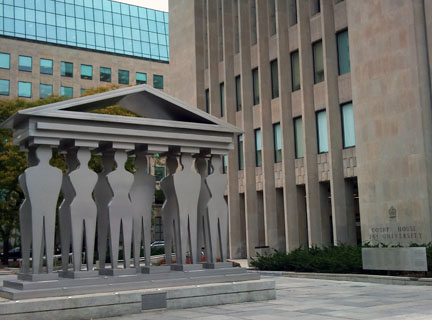Diverse bar groups are calling on the federal government for a more transparent and accountable process judicial appointments process saying the last round had an appalling lack of diversity.

The Canadian Association of Black Lawyers, the South Asian Bar Association, and the Federation of Asian Canadian Lawyers issued a joint statement saying the recent Ontario Superior Court judicial appointments show a “disregard for diversity” and are calling for change in the selection process.
“The recent appointments clearly perpetuate the historical under-representation of women and racialized persons in the Canadian judiciary,” says the statement.
Although the groups acknowledge the
Ontario judges named Dec. 16, are no doubt qualified for their posts, the groups would like to see a new appointments process that includes public evaluation criteria, a protocol for consultations, judicial diversity statistics, and an advisory panel of lawyers and community members.
They advocate for the new process to be in place for the remaining 14 vacancies in Ontario’s courts.
“FACL is disappointed with the latest list of judicial appointments, particularly in light of the Law Society of Upper Canada’s release on Oct. 30 . . . of its ‘Challenges Faced by Racialized Licensees Consultation Report,’” Lai-King Hum, president of FACL, stated in the release.
Jayashree Goswami, SABA’s president, says she is also “sorely disappointed” with the appointments as they do not reflect the general population of the province.
“Three out of 17 are women — that’s far lower than 30 per cent, which is status quo now,” Goswami points out.
Goswami says while she hasn’t had the opportunity to go beyond a visual spec of the names, she doesn’t know of anyone other than one minority appointee and calls it inexplicable that there wouldn’t be more than one racialized candidate in Ontario fit for the Canadian judiciary.
SABA, which is approaching its 10 year anniversary, has had disproportionate representation of the judiciary on its radar “since conception” says Goswami.
The proportion of women and minorities on the bench is a reality that is “so difficult not to see,” she adds. “It’s not an issue one has to search hard to find — it’s always been there.”
She says it’s one of the chief mandates all of the associations share — to promote diversity on the bench. The associations often keep an eye on relevant issues and work together to advocate for change.
An important point, says Goswami, is that this is not a race issue — this is a mainstream Canadian issue. No matter what your background is, you “need to sit up and take note of this,” she says.
President of CABL Arleen Huggins said in the release: “the lack of diversity among federally appointed judges is well documented. It is clear that the appointment rate for visible minorities is woefully inadequate viewed from both the perspective of the general Canadian population and within the legal profession itself. The government must be held to account.”
A judiciary that does not reflect the population it serves brings the whole justice system into disrepute, notes Goswami, adding there are studies saying it affects quality of justice — both as perceived by the public and actual — and raises access to justice issues.
“We like to be optimistic,” Goswami says of whether or not the associations are expecting a response to their statement. “We have raised this issue and we hope the federal government will take note. In the past . . . we haven’t been successful but we continue to be hopeful.”

 The Canadian Association of Black Lawyers, the South Asian Bar Association, and the Federation of Asian Canadian Lawyers issued a joint statement saying the recent Ontario Superior Court judicial appointments show a “disregard for diversity” and are calling for change in the selection process.
The Canadian Association of Black Lawyers, the South Asian Bar Association, and the Federation of Asian Canadian Lawyers issued a joint statement saying the recent Ontario Superior Court judicial appointments show a “disregard for diversity” and are calling for change in the selection process.